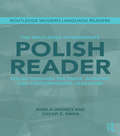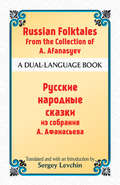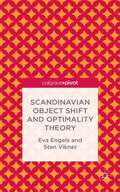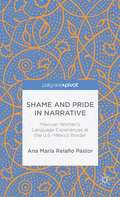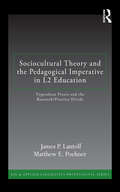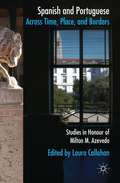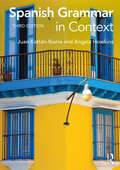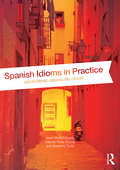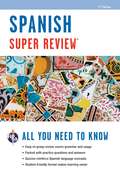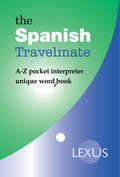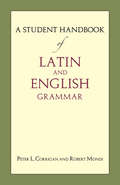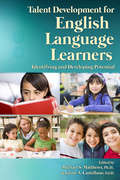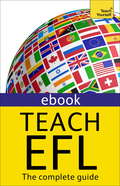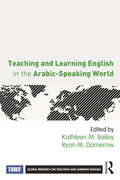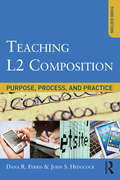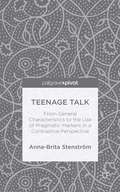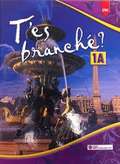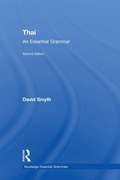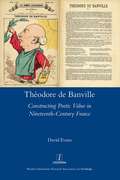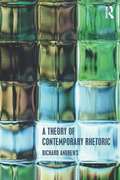- Table View
- List View
The Routledge Intermediate Polish Reader: Polish through the press, internet and contemporary literature
by Aniela Grundy Oscar SwanThe Routledge Intermediate Polish Reader is designed for intermediate students of Polish and includes a wide range of graded texts. The readings are taken from an assortment of contemporary Polish writing, including extracts from modern literature and articles from magazines and newspapers. The texts have been specifically selected to ensure that students receive maximum exposure to topics relevant to Polish language, history, culture and society, making this Reader an engaging and stimulating resource with a meaningful cultural context. Each reading is fully supported by: a general introduction text-related comprehension questions and extensive vocabulary exercises explanations of any difficult grammar structures encountered in the text a comprehensive glossary at the back of the book detailed cultural-historical notes answer key grammar supplement Suitable for both class use and independent study, The Routledge Intermediate Polish Reader is an essential tool for vocabulary learning and increasing reading proficiency.
Russian Folktales from the Collection of A. Afanasyev: A Dual-Language Book (Dover Dual Language Russian)
by Sergey Levchin Alexander AfanasyevThis original dual-language edition features new translations of Russian folk tales from the authoritative three-volume collection by famed author Alexander Afanasyev. A rich, robust world of the imagination that will captivate readers of all ages, this compilation's tales include The Princess-Frog, The Tale of Prince Ivan, The Firebird and the Gray Wolf, and many others.
San Ferminetan, Lesakan
by John Andueza AltunaDonostiako Bilintx institutura itzuli da John Andueza Larunbatean Bukowskin nobela arrakastatsuaren ondoren; oraingoan, DBHko 4. mailako abenturak kontatzen dizkigu. Danel eta Ximon lagunak dira protagonistak, baita Ximonen andregaia Amaia, eta gelako tribu guztietako ikasleak ere: apatxeak, komantxeak, txerokiak, txeieneak, moikanoak eta baita payuk despistaturen bat ere. Ikasketa-amaierako bidaia egiteko asmoa dute, eta horretarako dirua lortzeko hainbat ekintza antolatuko dituzte. Baina ezusteko batek planak guztiz aldarazi beharko dizkiete.
Scaffolding Language
by Pauline GibbonsThe bestselling Scaffolding Language, Scaffolding Learning helped tens of thousands of mainstream elementary teachers ensure that their English language learners became full members of the school community with the language and content skills they needed for success. In the highly anticipated Second Edition, Pauline Gibbons updates her classic text with a multitude of practical ideas for the classroom, supported by the latest research in the field of ELL/ESL. With clear directions and classroom tested strategies for supporting students' academic progress, Gibbons shows how the teaching of language can be integrated seamlessly with the teaching of content, and how academic achievement can be boosted without sacrificing our own vision of education to the dictates of knee-jerk accountability. Rich examples of classroom discourse illustrate exactly how the scaffolding process works, while activities to facilitate conversation and higher-level thinking put the latest research on second language learning into action.
Scandinavian Object Shift and Optimality Theory
by Eva Engels Sten ViknerThis book presents an account of object shift, a word order phenomenon found in most of the Scandinavian languages where an object occurs unexpectedly to the left and not to the right of a sentential adverbial. With new and original observations, it is an important addition to the fields of phonology, optimality theory and theoretical syntax.
Shame and Pride in Narrative: Mexican Women’s Language Experiences at the U.S.–Mexico Border
by Ana María Relaño PastorThis book analyzes personal experiences of language through the voices of Mexican immigrant women, in relation to the racialization discourses that frame the social life of Mexican immigrant communities in the United States. It reveals the power of narrative, understood as a social practice, to validate and give meaning to people's lives.
Sociocultural Theory and the Pedagogical Imperative in L2 Education: Vygotskian Praxis and the Research/Practice Divide (ESL & Applied Linguistics Professional Series)
by James P. Lantolf Matthew E. PoehnerExplicating clearly and concisely the full implication of a praxis-oriented language pedagogy, this book argues for an approach to language teaching grounded in a significant scientific theory of human learning—a stance that rejects the consumer approach to theory and the dichotomy between theory and practice that dominates SLA and language teaching. This approach is based on Vygotsky’s sociocultural theory, according to which the two activities are inherently connected so that each is necessarily rooted in the other; practice is the research laboratory where the theory is tested. From the perspective of language education, this is what is meant by the ‘pedagogical imperative.’ Sociocultural Theory and the Pedagogical Imperative in L2 Education• Elaborates a new approach to dealing with the relationship between theory and practice—an approach grounded in praxis—the dialectical unity of theory and practice• Presents an analysis of empirical research illustrating praxis-based principles in real language classrooms • Brings together cognitive linguistics and sociocultural theory ─ the former provides the theoretical knowledge of language required of praxis and the latter furnishes the theoretical principles of learning and development also called for in a praxis approach• Offers recommendations for redesigning teacher education programs Its timely focus on the theory-practice gap in language education and its original approach to bridging it put this book at the cutting edge of thinking about Vygotskian sociocultural theory in applied linguistics and SLA.
Spanish and Portuguese across Time, Place, and Borders
by Laura CallahanSpanish and Portuguese Across Time covers a diverse range of topics with a common focus, on the dynamic nature of languages and the social forces that shape them across time, place, and borders, and demonstrates how linguistic principles can offer productive angles to the study of literature.
Spanish Grammar in Context (Languages in Context)
by Juan Kattan Ibarra Angela HowkinsSpanish Grammar in Context provides an accessible and stimulating approach to learning grammar. Authentic texts are used to illustrate and explain the key areas of Spanish grammar, followed by a range of exercises to help students reinforce and test their understanding. An answer key is also presented at the back of the book. Features include: A rich variety of texts sourced from all over the Spanish-speaking world, including excerpts from contemporary literature, magazines and newspapers Texts carefully selected to cover topical issues and themes relevant to contemporary Spain and Latin America Clear, user-friendly and comprehensive coverage of grammar, aided by a list of grammatical terms An abundance of exercises designed to thoroughly build up grammatical understanding and effective comprehension and communication skills Free companion website featuring an assortment of extra exercises for additional practice This third edition has been revised and updated throughout and offers new exercises and fresh texts. Spanish Grammar in Context will be an essential resource for intermediate to advanced students of Spanish. It is suitable for both classroom use and independent study.
Spanish Idioms in Practice: Understanding Language and Culture
by Javier Muñoz-Basols Marianne David Yolanda Pérez SinusíaIdiomatic expressions are the ‘salt and pepper’ of any language. They give Spanish its colour and imagery, its richness and variety. From set phrases and idioms to metaphorical expressions and proverbs, these essential components allow users to add humour and spice to their language, vividly embodying Hispanic culture while naturalizing their communication style to more closely resemble that of native speakers. Key features: Includes a selection of the most widely used idioms from Spain and Latin America; Idioms are classified into specific and easy-to-reference categories; Creative activities, exercises, mnemonic devices and learning strategies facilitate the acquisition and mastery of idiomatic language; Connections between the Spanish language and Hispanic culture are explained and illustrated; Reference tables at the end of each section highlight similarities between English and Spanish usage of idiomatic language; Original samples, as well as fragments from various Spanish-speaking countries and well-known literary works, are included to help expose students to the use of idioms in journalistic and literary writing. Practical, informative and highly entertaining, this is the ideal text for all intermediate and advanced learners of Spanish.
Spanish Super Review, 2nd Ed.
by The Editors of REANeed help with Spanish? Want a quick review or refresher for class? This is the book for you! REA's Spanish Super Review gives you everything you need to know! This Super Review can be used as a supplement to your high school or college textbook, or as a handy guide for anyone who needs a fast review of the subject. * Comprehensive, yet concise coverage - review covers the material that students must know to read, write, and speak Spanish. Each topic is presented in a clear and easy-to-understand format that makes learning easier. * Questions and answers for each topic - let you practice what you've learned and build your skills. * End-of-chapter quizzes - gauge your understanding of the important information you need to know, so you'll be ready for any homework assignment, quiz, or test. Whether you need a quick refresher on the subject, or are prepping for your next exam, we think you'll agree that REA's Super Review provides all you need to know!
The Spanish Travelmate
by Lexus Alicia de Benito Harland Mike HarlandThe Spanish Travelmate phrasebook and dictionary gives you a detailed yet easy-to-use A to Z list of English words and phrases with Spanish translations for quick-find reference. There are more than 3500 words and phrases, and the Spanish translations come together with an easy-to-read pronunciation guide. Tap a hyperlink (there are hundreds of them) to go to special sections: travel tips about being in Spain; basic language notes; typical Spanish replies to your Spanish questions; conversion tables. These are features which make the Travelmate the must-have ebook Spanish phrasebook download for the traveller who wants to really communicate. The Spanish Travelmate phrasebook and dictionary also gives you a detailed Spanish menu reader of over 500 items and a dictionary section with translations of over 300 common Spanish signs and notices. This is the little book that's a big help. And a joined-up language experience.
State-Building and Multilingual Education in Africa
by Ericka A. AlbaughHow do governments in Africa make decisions about language? What does language have to do with state-building, and what impact might it have on democracy? This manuscript provides a longue durée explanation for policies toward language in Africa, taking the reader through colonial, independence, and contemporary periods. It explains the growing trend toward the use of multiple languages in education as result of new opportunities and incentives. The opportunities incorporate ideational relationships with former colonizers as well as the work of language NGOs on the ground. The incentives relate to the current requirements of democratic institutions, and the strategies leaders devise to win elections within these constraints. By contrasting the environment faced by African leaders with that faced by European state-builders, it explains the weakness of education and limited spread of standard languages on the continent. The work combines constructivist understanding about changing preferences with realist insights about the strategies leaders employ to maintain power.
A Student Handbook of Latin and English Grammar
by Peter L. Corrigan Robert MondiThe study of classical languages by earlier generations of English-speaking students was greatly facilitated by the study of English grammar in the schools, a tradition now out of favor but one that emphasized precisely the concepts, terms, and constructions needed for the study of Greek and Latin.A Student Handbook of Latin and English Grammar offers a student-friendly comparative exposition of English and Latin grammatical principles that will prove a valuable supplement to a wide range of beginning Latin textbooks as well as a handy reference for those continuing on to upper-level courses.
Talent Development for English Language Learners
by Michael Matthews Jaime CastellanoTalent Development for English Language Learners offers concrete guidance to teachers, schools, and administrators seeking to maximize the potential of all of their students. Each chapter will focus thematically on an issue relevant to developing the talents and potential of gifted English language learners (ELLs) in inclusive educational settings. Examples are provided of how schools or educators might conventionally conceptualize and handle the issues related to ELLs and what the concerns or unintended negative outcomes are for gifted ELLs. The authors focus on what an "ideal" response might be from the lens of both the gifted education and the language education field, and how collaborative efforts across these perspectives yield effective interventions in schools and related educational settings for students who are both English language learners and highly academically able.
Tamil Mozhi Varalaru
by SakthivelThis book talks about the history of the ancient language Tamil and the way it's literature flourished during different dynasities and goes on to talk about the present day Tamil.
Teach EFL: Teach Yourself (Teach Yourself Ser.)
by David RiddellTeach EFL is the ultimate practical reference guide to teaching English as a Foreign Language. 'Riddell's book is a classic - it answers all those questions new language teachers have. . . . covers an amazing amount in a clear accessible way. ' David Carr, Director of Teacher Training International House London This book is packed with information on: -effective teaching techniques. -sound classroom management. -practical lesson planning. -successful job hunting and career development. This is an indispensable book for all new and experienced EFL teachers: a step-by-step guide on what to teach and how to teach it. This edition has been fully revised to include: -up-to-date information on technology as an aid to learning. -comprehensive information on the increasingly popular task-based learning. -invaluable advice on making the transition from learning to teaching. -clear guidance on ongoing professional development. -useful examples of teaching in different international contexts. Rely on Teach Yourself, trusted by learners for over 70 years.
Teach English as a Foreign Language (New Edition): eBook
by David RiddellThis new edition of Teach EFL is the ultimate practical reference guide to teaching English as a Foreign Language. 'Riddell's book is a classic - it answers all those questions new language teachers have....covers an amazing amount in a clear accessible way.'David Carr, Director of Teacher TrainingInternational House LondonThis book is packed with information on:-effective teaching techniques.-sound classroom management.-practical lesson planning.-successful job hunting and career development.This is an indispensable book for all new and experienced EFL teachers: a step-by-step guide on what to teach and how to teach it. This edition has been fully revised to include:-up-to-date information on technology as an aid to learning. -comprehensive information on the increasingly popular task-based learning.-invaluable advice on making the transition from learning to teaching.-clear guidance on ongoing professional development.-useful examples of teaching in different international contexts.Rely on Teach Yourself, trusted by learners for over 75 years.
Teaching and Learning English in the Arabic-Speaking World: Teaching And Learning English In The Arabic-speaking World (Global Research on Teaching and Learning English)
by Kathleen M. Bailey Ryan M. DamerowCo-published with The International Research Foundation for English Language Education (TIRF) An important contribution to the emerging body of research-based knowledge about teaching English to native speakers of Arabic, this volume presents empirical studies carried out in Egypt, Lebanon, Oman, Palestine, Saudi Arabia, and the United Arab Emirates (UAE)—a region which has gained notable attention in the past few decades. Each chapter addresses an issue of current concern, and each includes implications for policy, practice, and future research. Nine chapter authors are Sheikh Nahayan Fellows—recipients of doctoral fellowships from The International Research Foundation for English Language Education (TIRF). This volume is the first in the Global Research on Teaching and Learning English Series, co-published by Routledge and TIRF.
Teaching L2 Composition: Purpose, Process, and Practice
by John Hedgcock Dana R. FerrisThis popular, comprehensive theory-to-practice text is designed to help teachers understand the task of writing, L2 writers, the different pedagogical models used in current composition teaching, and reading–writing connections. Moving from general themes to specific pedagogical concerns, it includes practice-oriented chapters on the role of genre, task construction, course and lesson design, writing assessment, feedback, error treatment, and classroom language (grammar, vocabulary, style) instruction. Although all topics are firmly grounded in relevant research, a distinguishing feature of the text is the array of hands-on, practical examples, materials, and tasks that pre- and in-service teachers can use to develop the complex skills involved in teaching second language writing. Each chapter includes Questions for Reflection, Further Reading and Resources, Reflection and Review, and Application Activities. An ideal text for L2 teacher preparation courses, courses that include both L1 and L2 students, and workshops for instructors of L2 writers in academic (secondary and postsecondary) settings, the accessible synthesis of theory and research enables readers to see the relevance of the field’s knowledge base to their own present or future classroom settings and student writers.
Teenage Talk: From General Characteristics to the Use of Pragmatic Markers in a Contrastive Perspective
by Anna-Brita StenströmThis in-depth study of the use of pragmatic markers by Spanish and English teenagers offers insight into the currently under-investigated area of teenage talk through the analysis of the Corpus Oral de Lenguaje Adolescente de Madrid and The Bergen Corpus of London Teenage Talk.
Thai: An Essential Grammar (Routledge Essential Grammars)
by David SmythThis second edition of Thai: An Essential Grammar provides an up-to-date and concise reference guide to Thai grammar. Using clear, jargon-free explanations, it sets out the complexities of Thai in short, readable sections and presents an accessible description of the language. Focus is kept on the real patterns of use today and grammar forms are demonstrated through a wide range of relevant examples. No prior knowledge is assumed on the part of the reader. Features include: Coverage of crucial topics, such as sentence particles, negation, questions and quantification Examples given in both Thai script and romanised transliteration Pronunciation section Guidance on speech conventions and the Thai writing system Glossary of grammatical terms Two appendices covering Romanisation systems and three key verbs Bibliography This unique reference work will prove invaluable to all learners looking to master the grammar of Thai. It is ideal either for independent study or for students in schools, colleges, universities and adult classes of all types.
Theodore De Banville: Constructing Poetic Value in Nineteenth-century France
by David EvansTheodore de Banville (1823-1891) was a prolific poet, dramatist, critic and prose fiction writer whose significant contribution to poetic and aesthetic debates in nineteenth-century France has long been overlooked. Despite his profound influence on major writers such as Baudelaire, Rimbaud, Verlaine and Mallarme, Banville polarised critical opinion throughout his fifty-year career. While supporters championed him as a virtuoso of French verse, many critics dismissed his formal pyrotechnics, effervescent rhythms and extravagant rhymes as mere clowning. This book explores how Banville's remarkably coherent body of verse theory and practice, full of provocative energy and mischievous humour, shaped debates about poetic value and how to identify it during a period of aesthetic uncertainty caused by diverse social, economic, political and artistic factors. It features a detailed new reading of Banville's most infamous and misunderstood text, the Petit Traitede poesie francaise, as well as extended analyses of verse collections such as Les Stalactites, Odes funambulesques, Les Exiles, Trente-six Ballades and Rondels, illuminated by wide reference to Banville's plays, fiction and journalism. Evans elucidates not only aesthetic tensions at the heart of nineteenth-century French verse, but also a centuries-old tension between verse mechanisms and an unquantifiable, mysterious and elusive poeticity which emerges as one of the defining narratives of poetic value from the Middle Ages, via the Grands Rhetoriqueurs and Dada, to the experiments of the OuLiPo and beyond.
A Theory of Contemporary Rhetoric
by Richard AndrewsA Theory of Contemporary Rhetoric describes, explains, and argues the overarching theory of contemporary rhetoric. This current view of rhetoric brings together themes in the communication arts, including political literary criticism; bi- and multi-lingualism; multimodality; framing as an artistic and sociological device for composition and interpretation; literacy in the digital age; and the division between fiction and ‘non-fiction’ in language/literature studies. Chapters explore the implications of rhetoric for particular aspects of the field. Discussions throughout the book provide illustrations that ground the material in practice. As an overarching theory in the communication arts, rhetoric is elegant as a theoretical solution and simple as a practical one. It asks such questions as who is speaking/writing/composing? to whom? why? what is being conveyed? and how is it being conveyed? Acknowledging the dirth of recent works addressing the theory of rhetoric, this book aims to fill the existing theoretical gap and at the same time move the field of language/literature studies forward into new territory. It provides the keynote theoretical guide for a generation of teachers, teacher educators and researchers in the fields of English as a subject; English as a second, foreign or additional language; and language study in general.
